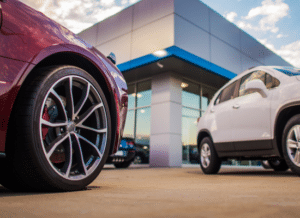In the fast-paced world of auto sales, cash flow strategies for dealerships remain a central piece of the financial puzzle for leaders. While profitability can often steal the spotlight in business performance metrics, understanding and optimizing cash flow is critical to the long-term vitality of dealerships. With that in mind, let’s focus on practical measures auto dealerships can implement to maintain a healthy cash flow.

Accelerating Cash Inflows
For auto dealerships, the primary stream of revenue is from vehicle sales. To improve cash flow, expediting the cash conversion cycle is essential. This means shortening the time between a sale and when the cash is in the bank. Processing paperwork promptly and efficiently ensures that bank financing funds are received quickly. Likewise, monitoring inventory levels to avoid overstocking can prevent cash from being tied up unnecessarily, reducing floor plan interest expenses.
Another vital area to consider is the parts and service departments. These areas should employ rigorous accounts receivable practices, such as prompt invoicing and diligent follow-up on late payments. Managing these effectively can significantly enhance cash flow. Additionally, pursuing warranty receivables with precision can lead to faster manufacturer payouts.
Navigating Cash Outflows
On the flip side, dealerships should scrutinize their cash outflows. This includes managing expenses, negotiating with suppliers for extended payment terms, and leveraging policy support for operating cost reductions. Areas like advertising and outside services can often yield cost savings when re-evaluated with a critical eye. For instance, consolidating vendors for customer relationship management can lead to better rates and less cash outflow.
Investment and financing activities also demand attention. Suspending non-essential expenditures and optimizing loan terms with financial institutions can ease cash flow pressures. Dealerships should use favorable financial policies, including reduced loan interest rates and increased credit lines where available.
Staying Ahead with Reconciliations
Cash flow management is not complete without robust reconciliation practices. Regularly reconciling the books ensures that the financial data reflects the dealership’s actual cash position. Daily cash reconciliations help identify discrepancies early, while monthly reconciliations provide a deeper dive into the dealership’s financial standing, including the scrutiny of accounts receivable and payable.
Adopting a Strategic Approach
A strategic approach to cash flow also involves evaluating used vehicle pricing. Ensuring that they are priced correctly for both acquisition and sale is crucial. Staff responsible for trade-ins and used sales must be skilled in pricing to move inventory at a profit. Recognizing when to cut losses on underperforming inventory is equally important.
Staying Updated with Financial Advice
With the evolving economic landscape, auto dealerships must stay informed about recent financial updates and regulations that may impact cash flow. Dealers should consult with financial advisors or CPAs regularly. These professionals can offer tailored advice that addresses the dealership’s unique cash flow challenges and opportunities.
Driving Forward
Cash flow management should be an ongoing priority for auto dealership leaders, both operational and financial. Dealerships can navigate the road ahead with greater financial stability and success by taking proactive steps to manage cash inflows and outflows, maintaining rigorous reconciliation practices, and seeking expert financial advice. Remember, a keen eye on cash flow today can fuel the growth and profitability of tomorrow.
Contact Keith Laudenberger with any questions via our online contact form.
Councilor, Buchanan & Mitchell (CBM) is a professional services firm delivering tax, accounting and business advisory expertise throughout the Mid-Atlantic region from our office in Bethesda, MD.



